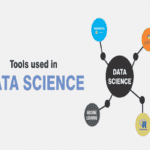Digitization has massively impacted the world. With the large volume of data that we’re creating, it has become integral for companies to harness this information accurately and use it in strategizing their policies. From small start-ups to multinational corporations, companies across the globe are leveraging the power of analytics to drive productivity, optimize their operations and make informed decisions.
The scope of business analytics is expanding, and hence individuals are now opting for business analytics courses that can boost their professional growth. In this blog, we are going to unfold the role of business analytics with examples and its scope in the future.
What is Business Analytics?
Before delving deeper into the functionalities of business analytics, it is important to understand what business analytics is. The latter is the practice of using statistical techniques, data mining, predictive modelling, and Machine Learning algorithms to analyze past and present data. Eventually, this helps in gaining valuable insights and supports business decision-making. It involves collecting, organizing, and transforming raw data into meaningful information that can drive strategic initiatives and improve overall performance.
Types of Business Analytics:
Business Analytics is a wider domain and encompasses several analytics tools. The following segment highlights the different types of Business Analytics:
1. Descriptive Analytics:
Descriptive analytics focuses on summarizing historical data to gain a better understanding of past events and trends. It answers the question, “What has happened?” This type of analytics uses various techniques, such as data aggregation, Data Visualization, and Statistical Analysis to provide a comprehensive overview of business performance. By examining historical data, organizations can identify patterns, trends, and anomalies, which can be used to guide future actions.
2. Diagnostic Analytics:
It aims to delve deeper into the data to identify the root causes of specific events or outcomes. It goes beyond the “what” of descriptive analytics and focuses on understanding the “why” behind certain patterns or trends.
By employing advanced analytical techniques, such as regression analysis and root cause analysis, diagnostic analytics helps businesses uncover the factors influencing their performance. This knowledge enables them to make data-backed decisions to address challenges and capitalize on opportunities.
3. Predictive Analytics:
Predictive analytics involves the use of historical data, statistical algorithms, and machine learning techniques to forecast future outcomes or trends. By analyzing patterns and relationships within the data, predictive analytics enables businesses to make informed predictions and anticipate potential outcomes.
This type of analytics is particularly valuable for demand forecasting, customer segmentation, risk assessment, and fraud detection. With predictive analytics, organizations can proactively identify opportunities, mitigate risks, and optimize their strategies.
4. Prescriptive Analytics:
Prescriptive analytics takes predictive analytics a step further by providing actionable recommendations to optimize decision-making. It goes beyond predicting future outcomes and suggests the best course of action to achieve desired results.
By leveraging optimization techniques, simulation models, and decision algorithms, prescriptive analytics helps businesses evaluate different scenarios. Thus helping them formulate the most effective strategies. Moreover, this type of analytics empowers organizations to make data-driven decisions and maximize their competitive advantage.
Business Analytics Examples:
Now that we have explored the different types of business analytics let’s delve into some real-world examples to illustrate their applications.
Example 1: Retail Sales Optimization:
A retail chain wants to optimize its sales by identifying the key drivers of customer purchasing behaviour. Using descriptive analytics, the company analyzes historical sales data, customer demographics, and product attributes.
It discovers that certain product categories perform exceptionally well among a specific customer segment. With this insight, the retail chain develops targeted marketing campaigns, personalized offers, and optimized product placements. Thus enjoying higher sales and better customer experience.
Example 2: Fraud Detection in Financial Services:
A financial institution wants to enhance its fraud detection capabilities can benefit form predictive analytics. With this, they can analyze transactional data, customer behaviour patterns, and historical fraud cases.
By building machine learning models, the institution can identify suspicious activities and detect potential fraudulent transactions in real-time. Hence, with this proactive approach allows the institution to prevent fraudulent activities. Thus, companies can safeguard their customers’ assets, and maintain trust in the financial system.
Example 3: Supply Chain Optimization:
A manufacturing company aims to optimize its supply chain operations by reducing costs and improving efficiency. So, by using prescriptive analytics, the company analyzes historical sales data, production capacities, inventory levels, and transportation costs.
By simulating different scenarios and leveraging optimization algorithms, the company identifies the optimal production schedule, inventory levels, and transportation routes. As a result, the company achieves significant cost savings, streamlined operations, and improved customer satisfaction.
The Scope of Business Analytics:
Business Analytics applications are growing. Consequently, companies willing to expand their business are now adopting analytical tools that can drive their decision-making process. Moreover, the Business Analytics Market will register a CAGR of 7.8% over the next five years.
The growth in the Business Analytics market will also boost the growth of jobs in this domain. As per the BLS, the role of management analysts is expected to grow 11% between 2021 and 2031. This signifies the growing relevance of Business Analytics across the industry. So, this is the right time to jump into the pool of Business Analytics and enroll on the Business Analytics Course.
Conclusion
In today’s data-driven business landscape, business analytics is indispensable for organizations looking to gain a competitive edge. Hence, companies are harnessing the power of different types of Business Analytics to make informed decisions and drive growth. Whether it is optimizing sales, detecting fraud, or streamlining operations, the applications of business analytics are far-reaching and impactful.
Frequently Asked Questions
What Will I Learn in Business Analytics?
If you enrol on the Business Analytics course, you will learn about the fundamentals and concepts of Business Analytics. In addition, the course will also help you acquire practical skills via projects and case studies. Some of the key concepts that you will learn are:
- What is Business Analytics and its scope
- Data exploration and visualization
- Types of Business Analytics and its Application
- Statistical analysis and modelling
- Machine Learning
- Business Intelligence
- Ethical and legal considerations
- Communication
Is Business Analytics and Data Science the Same?
No, business analytics and data science are not the same. Although both involve data analysis, there is a line of difference. Business analytics is centred around using data to drive business decision-making and solve specific business problems. On the other hand, data science is a broader field that encompasses various techniques for extracting insights from data. It involves statistical analysis, machine learning, programming, and data visualization. Data science aims to discover patterns, predict outcomes, and uncover insights from data, not limited to business applications.
Is Business Analytics a Good Career?
Yes, pursuing a career in this domain will open new avenues of growth. Moreover, with the growing adoption of this technology, there will be greater scope for growth. The salary of a Business Analyst ranges between ₹ 2.6 Lakhs to ₹ 15.3 Lakhs, with an average annual salary of ₹ 6.5 Lakhs.
Read Blog: Business Intelligence vs Business Analytics?
| BI | BA | |
| Focus | Reporting and analysis of historical data to monitor and understand business performance. | Use of data analysis techniques to gain insights, make predictions, and drive decision-making. |
| Purpose | Provide descriptive information and answer specific questions about past performance. | Utilize data to uncover patterns, trends, and insights for proactive decision-making. |
| Data Source | Primarily relies on structured data from internal systems and databases. | Utilizes both structured and unstructured data from various sources, including internal and external data. |











